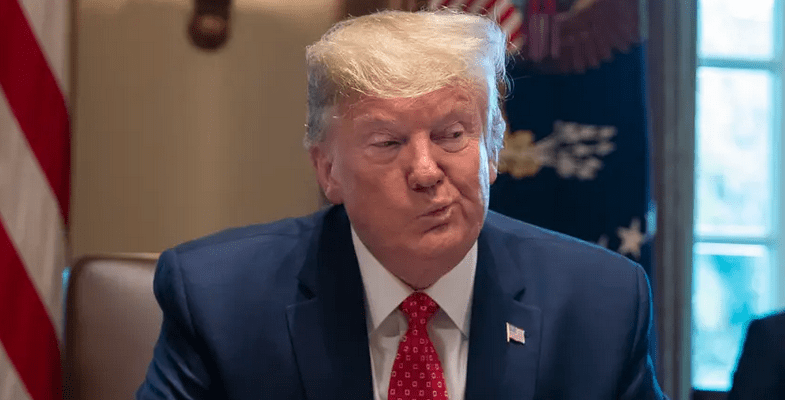Oops: Donald Trump, Iran and the Perils of Multiple Choice
The president of the United States was presented with a list of options and chose the red herring. A few props might’ve helped.

AP
Lisa Van Dusen
Jan. 5th, 2020
Of all the sectors, industries and cultural phenomena — from coal to oil to selective serotonin reuptake inhibitors — that have benefited from Donald Trump’s unlikely presidency of the world’s flagship democratic superpower, ironic nostalgia may be the most unappreciated.
In the same way that Trump’s impeachment has made us pine for the days when impeachment was all about sex, lies and bodily fluids and his tweets have made us hanker for presidential circumspection, his commander-in-chiefing conjures a wistful yearning for a time when wars were justified with at least a minimum of deference to casus belli through the use of Anthrax vials and Tonka trucks brandished to legitimize gauzy intelligence.
It would be nice to think that, in the 17 years since an elaborate manufactured narrative was constructed to justify the U.S. invasion of Iraq as a sort of Amish barn-raising of B.S. involving Shakespearean machinations in the White House, intelligence corruption and planted propaganda from journalist/operatives, decisions involving war and peace had become less byzantine.
As narrative catalysts go, the assassination of Iranian General and Quds Force commander Qassem Soleimani at least has the advantage of being more graspable as a moral reckoning by the general public than as a strategically sound military strike, which is sort of the reverse of the usual casus belli gap.
Traditionally, certain military actions — whether reckless adventurism or bloody means to arguably noble ends — had to be gilded for public consumption. In the case of the drone strike that may prove to be the trigger for a series of fateful plot twists, it would have been hard to pick a more villainous target than Soleimani. But in this case, it’s the experts who’ve been questioning the strategic soundness of what everyone agrees is an act-of-war level provocation aimed at Iran.
Fortunately, as the New York Times reported on Saturday, in the case of this latest foray into Middle East stabilization, the decision to unleash a cascade of outcomes that could further diminish America’s influence in the region was entirely Donald Trump’s and not that of administration officials lubricating some murky, undeclared power agenda.
Indeed, the military officials who presented the notoriously unpredictable and disruptive commander-in-chief with the option of killing Soleimani as one of a list of possible responses to Iran’s recent, inflammatory actions in Iraq only did so, per the Times, because they thought he wouldn’t pick the most extreme item on their retaliation menu. “Top Pentagon officials were stunned,” the Times reported, when Trump chose the strike option. “They didn’t think he would take it.” (The other choices were, 1) Tweet a photo of Ayatollah Khameini as The Joker, 2) Tweet a photo of Soleimani as The Joker, and 3) Tweet photo of Khameini as “overrated actress” Meryl Streep.)
In other words, this particular instance of tinderbox combustion was based not on an overestimation of contrived intelligence but on an overestimation of intelligence, period. “When Mr. Trump chose the option of killing General Suleimani, top military officials, flabbergasted, were immediately alarmed about the prospect of Iranian retaliatory strikes on American troops in the region,” the Times reported.
So, to recap, a decision to assassinate the second-most powerful man in Iran that could rationalize a parade of ostensibly unintended consequences from a retaliatory surge of Iran-backed terrorism to a resurgence of Islamic State terrorism was the product of an assumption that if a commander-in-chief freshly impeached for, broadly speaking, stupidity, were presented with the stupidest course of action possible, he’d choose a less stupid alternative.
It’s enough to make you ironically nostalgic for the days of “slam dunk.”
Lisa Van Dusen is associate editor of Policy Magazine and a columnist for The Hill Times. She was Washington bureau chief for Sun Media, international writer for Peter Jennings at ABC News, and an editor at AP in New York and UPI in Washington.
